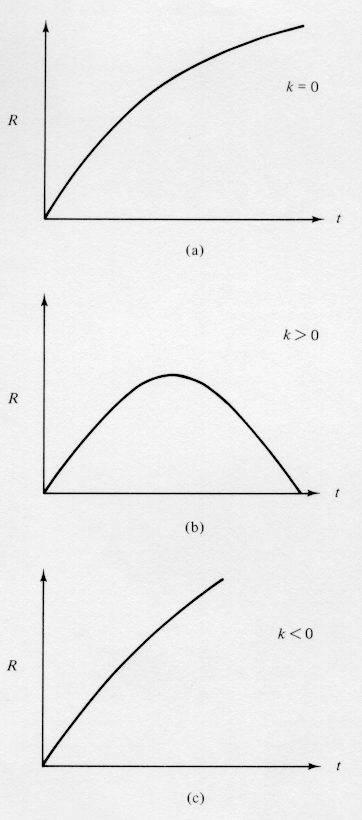The Dynamics of the Expanding Universe
We'll illustrate expansion dynamics using Newtonian
dynamics.
Happily, we will derive the same dynamical equations that come out of
general
relativity for a relativistic cosmology, with a few terms redefined.
Start with a test particle on the surface of an
expanding
sphere of radius R. Its equation of motion starts with F=ma and works out to be:

Since density is proportional to R-3, and we
define
"now" with a 0 subscript, and R0=1, we have

Which we can insert into the equation of motion to get

Note that if rho0
is nonzero, the Universe must be expanding or contracting. It cannot be
static.
How do we integrate this? Multiply both side by Rdot
to get
 And remember that
And remember that
 So that
So that

Now, another rememberance:

So that we have

 Or,
Or,

where -k is a constant of integration. Replacing rho0
with rho*R3,
and then dividing by R2, we finally get

What does this mean?
- If k=0,
then
Rdot is
always positive, and the expansion continues at an ever slowing pace
(since
rho is dropping). This is called a critical
or
flat universe.
- If k>0,
Rdot is initially
positive, but will reach a point where it goes to zero. Expansion
stops, gravity wins, and the universe then starts to collapse. This is
a closed universe.
- If k<0,
Rdot is always
positive, and never goes to zero -- expansion always continues. This is
an open universe.







 Or,
Or,

